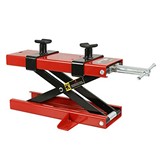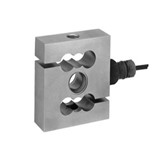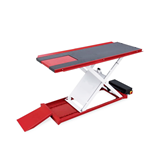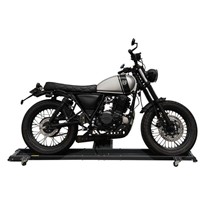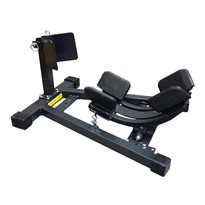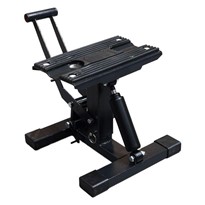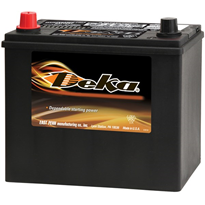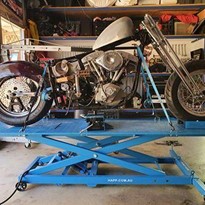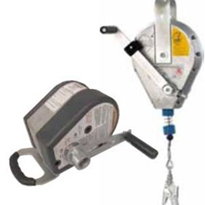Ah, the weekend is here. You can almost taste the BBQs, cold ones and fresh air. And all you really want to do is jump on your motorcycle and ride off into the sunset.
But first, you’ve got to get your motorcycle to where you’re going (and safely).
This includes choosing the best motorcycle ramp to load it onto the back of your ute or trailer.
Because let’s be honest, nothing will put a dampener on your weekend away like a motorcycle load gone wrong. And we’re not just talking about damage to your favourite toy - the wrong ramp can put you in strife, too.
Well, this guide on how to choose a motorcycle ramp will take you through:
- Finding a ramp that supports your motorcycle weight
- Measuring your vehicle height to get the right length (don’t worry, we’ll do the maths for you)
- Why you shouldn’t overlook connection points
- The latest and greatest ramp features
- The different ramp styles to choose from
Let’s get stuck in.
Check The Weight
We don’t mean to be captain obvious, but your ramp should have a load rating that supports your motorcycle.
Because the wrong load rating could put you (and your motorcycle) at risk. So first things first, weigh your beast. You can usually find the motorcycle weight in the manual.
You also want to make your decision based on the heaviest possible weight of the motorcycle. So, take into account things like…
- If you’re loading multiple motorcycles, it should be rated to carry the heaviest one.
- If you plan on sitting on the motorcycle as you load it, add your weight too.
- Take into account the wet weight of the motorcycle (including fluids like oil and fuel).
And finally, if you can’t find the load rating of the ramp, that’s an immediate red flag (and it’s time to make a swift B-line for the exit).
Check The Height
Now, grab a tape measure. The height of your ute or trailer will determine what ramp length you need (as these two factors work together to impact the gradient). Yep, remember the sin, cos and tan method we learnt at high school to calculate the side length of a triangle? Us, neither.
That’s why we created a handy ramp calculator that does the heavy lifting for you. Key in the height of your trailer or ute and the length of the ramp you’re interested in. Then, it’ll tell you the gradient. Simple.
As a general rule of thumb, a 1:4 ratio is recommended. The ramp calculator will also show you a diagram to give you a visual interpretation.
Finally, getting the right gradient is essential, because a ramp that’s too short and steep for your motorcycle puts you at risk of sliding, tipping or rolling. Not only that, it’s harder work for you to push. And who wants that on a weekend away?
Consider Connection Points
In the words of every dad who has ever tied down a load, “that’s not going anywhere.”
And that’s exactly what you want to say about your motorcycle loading ramp, too. The connection points will keep the ramp safely and securely attached to your ute or trailer, avoiding any slippage. There are a few different connection points on the market…
- Soft tip synthetic coated loading point, which safely grips to your ute or trailer (while protecting it from damage and scratching)
- Solid loading plate and locking pin, which fixes your ramp to your ute or trailer for maximum stability
- Hook-end connection point allowing the ramp to securely sit on the edge of your ute or trailer
Ramp Features
Every ramp comes with different features, so it’s good to weigh up what’s important to you.
Riding your motorcycle rain, hail or shine? Then you want to choose a ramp with a good anti-slip surface.
Plan on riding solo? Then you want to choose a ramp made from a lightweight material (like aluminum).
Need to store it in a tight space? A fold-away design will do the trick.
Here are some of the snazzy ramp features you should consider…
- Material - is it lightweight and corrosion-free?
- Easy storage - do you need a compact design?
- Connection points - what type do you prefer?
- Anti-slip surface - this one’s a no brainer
Choose Your Style
Last but not least, there are different ramp styles to choose from: non-folding, curved, folding, side-walk... the list goes on. And it all comes down to personal preference.
Here are some of our most popular styles…
Non-folding, Multi-use Ramps
Non-folding ramps, like the Heeve Aluminum Multi-Use Ramp, are suitable for a broad range of applications.
They’re also great if you only require a short ramp and you have the space to store it (without the need for a folding feature).
Curved Folding Ramps
Curved folding ramps, like the Heeve Aluminium Curved Folding Ramp, are also suitable for a range of applications.
They’re lightweight and durable, which makes them easy to store when not in use. The curve design helps to prevent bottoming out on the way up.
Side-walk Ramps
Side-walk ramps, like the Whipps Folding Side-Walk Ramp, come with a set of side ramps so you can plant your feet and walk your motorcycle up. A great option if you want complete control when loading and unloading (you’ll be able to safely use this ramp solo).
So, ask yourself how you plan to use your ramp, where you’ll be storing it and whether you plan to go up the ramp with your motorcycle. Knowing this will help point you toward the ramp style you need.
If you need a few prompts, check out our Motorcycle and ATV Ramp Finder Quiz.
Choose From Australia’s Largest Range Of Motorcycle Ramps
At Ramp Champ, we’re Australia’s largest and best ramp retailer - selling thousands of ramps every year. While some automotive stores might only have one standardised motorcycle ramp on the shelf, we’ve got more than a dozen ramps to choose from, which vary in load rating, width and features.


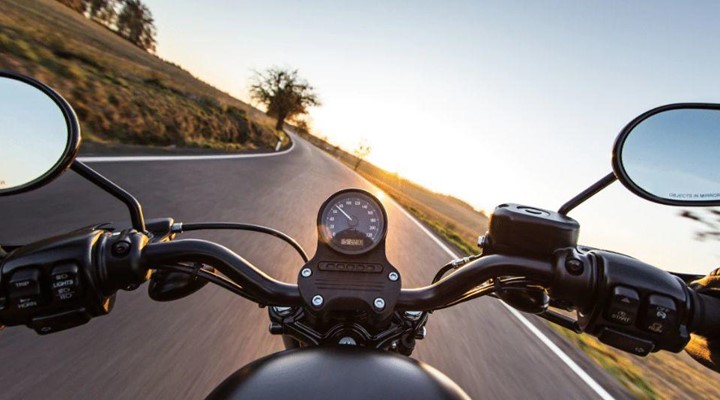

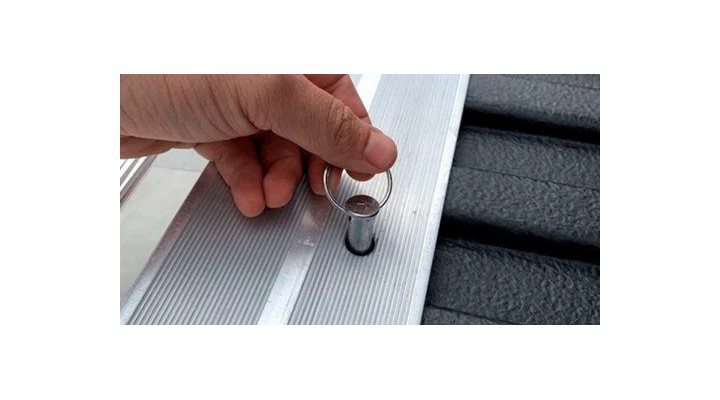
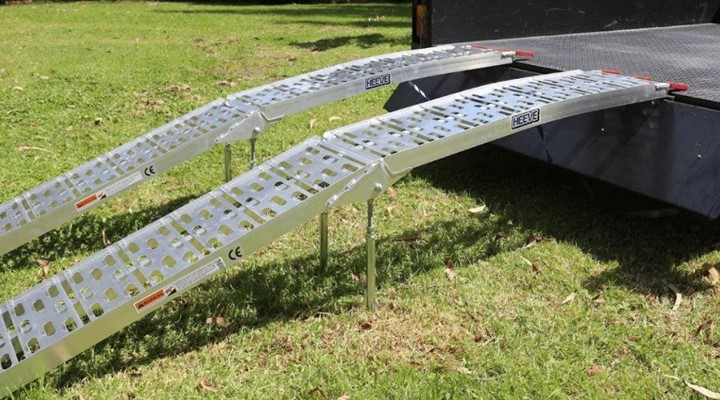
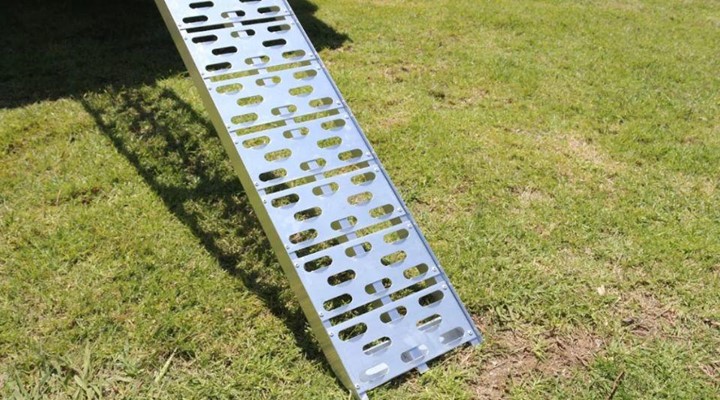
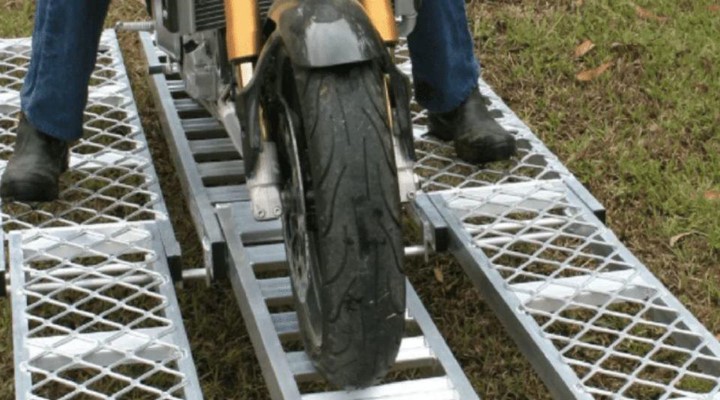

-160x160-state_article-rel-cat.png)


-160x160-state_article-rel-cat.png)

